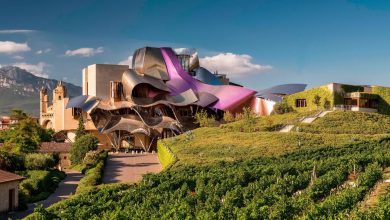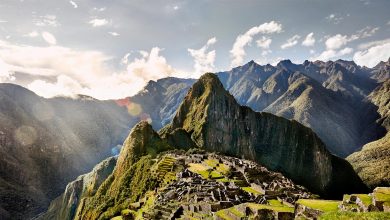Here are 5 curiosities about the statue of Christ the Redeemer that you probably don’t know.
Table of Contents
Christ the Redeemer Statue: its secrets
In Rio de Janeiro, on the Corcovado mountain, stands the statue of Christ the Redeemer. The symbol, strongly desired by the Brazilian Christian community, towers over the city in a protective embrace of its “children”. It has been named as one of the New Wonders of the World along with the Colosseum, Taj Mahal, Machu Picchu, Chichen Itza, Petra and the Great Wall of China. Let’s discover the 5 hidden secrets.
1. A symbol of Rio for 90 years
From the height of 710 meters of Corcovado Mountain, in the heart of Rio de Janeiro and accessible from the Jardim Botânico, the huge statue of Christ the Redeemer stands out in the panorama. At 40 meters high and illuminated at night, it cannot go unnoticed, even to the less attentive eye. It is the fourth tallest statue in the world and its weight cannot be less (1145 tons), also due to the soapstone coating.
The main curiosity, however, lies in the date of inauguration. It is October 12, 1931, the day Christopher Columbus discovered America. An anecdote to know absolutely. The first time the statue of Christ the Redeemer was illuminated was thanks to Guglielmo Marconi who sent a radio pulse from Rome to light the imposing structure.
2. A Frenchman and a Romanian behind the Brazilian emblem
The idea of the huge statue over the “cidade maravilhosa” was ten years earlier. The Carioca Circle, in 1921, called a competition to create a monument in honor of the centenary of Portugal’s independence (1822). The winner was Heitor da Silva Costa, who was unable to complete the work during the following year.
The statue was completed ten years later and did not bring success to the Brazilian architect, but to Paul Landowski, the Franco-Polish sculptor who made changes to the statue of Christ the Redeemer. The face, on the other hand, is the work of the Romanian sculptor Gheorge Leonida. Two Europeans to sculpt what is probably one of the most famous symbols of all South America.
3. From France to Brazil, piece by piece
The statue of Christ the Redeemer was transported in its entirety, piece by piece, from France to Brazil. To reach Corcovado, the Ferrocarril do Corcovado, the small train used to reach the top of the mountain that crosses the Parque Nacional da Tijuca, was used. The train, inaugurated in 1884, is therefore older than the statue, although it can be thought to have been introduced to simplify access for the millions of tourists who visit Corcovado each year.

4. The statue of the miracles behind Christ
Behind the statue of Christ the Redeemer there is a small chapel that houses the statue of the black Madonnina. The legend, seen and told by dozens and dozens of people, tells that, after several days of unsuccessful fishing, some fishermen picked up the body of the decapitated black Madonnina. They rejected the nets and found the head. At the next cast, the nets were miraculously filled with fish.
5. A count’s gift to Italy
The Count of Biella, Stefano Rivetti de Val Cervo, during a trip to Rio de Janeiro, was very impressed by the statue of Christ the Redeemer. He then decided to entrust the task of producing a similar one to the Florentine sculptor Bruno Innocenti. Thus, the statue was donated to the Lucan town of Maratea and erected on Monte San Biagio in 1965. The monument, in addition to an act of faith, was created with the intention of representing the rebirth of Maratea and southern Italy.





